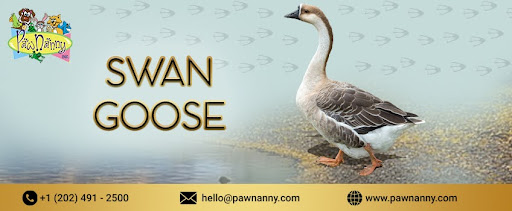
Hyacinth Macaw
Scientific Name: Anodorhynchus hyacinthinus
Flock Members: 10-20 members
Size: 40 inches
Weight: 2.6-3.6 pounds
Hypoallergenic: No
Lifespan: 60 years
Behavior
The hyacinth macaw is the largest but friendly despite its large size. Hyacinth macaws are social birds known to engage in various activities in large groups of birds. They are social birds, which interact a lot with their partners and young ones are known to be very playful. Hyacinth macaws pair up for breeding and stay together until death. The male and female cooperate in choosing a nest site, usually in a tree hole, then they share equally in sitting on the eggs, and later, the parents bring food to the chicks by regurgitation. The parents are very aggressive while caring for the young ones or the chicks. The male and the female are known to guard the nest by hissing and biting, and in case you want to move them, make sure to call professional Pet Taxi Services in Fairfax USA.
These parrots are very active and should be interacted with often. When in the wild, the hyacinth macaws congregate in large groups to feed on various items, including nuts, seeds, and fruits. Their beaks are sturdy enough to open even the toughest palm nuts. It may move from one area of its territory to another in search of food resources. During the night, they roost in large groups in trees. Hyacinth macaws remain active and important birds within a flock even when caged. They allopreen or groom each other's feathers using the beak. Although hyacinth macaws are among the largest parrots and have one of the most potent voice capabilities, they are friendly birds if socialized and tamed from a young age.
History
The hyacinth macaw, with its vivid cobalt blue coloration, is a sight to behold. Endemic to central and eastern South America, these majestic birds are found in palm swamps and woodlands in Brazil, Bolivia, and Paraguay. The beauty of the hyacinth macaw has captivated humans for centuries, with indigenous tribes of South Americans using its feathers to make ornaments, particularly in headdresses. The 19th century saw a closer interaction with these large and beautiful parrots, which interested European collectors and bird scientists. The hyacinth macaw was first described in 1831 by the French naturalist René Primevère Lesson.
Hyacinth macaws are now endangered mainly because people captured most of them and sold them as pets in the late 1900s. By 1980, they were almost regarded as an extinct species of animals. These birds were bred in captivity to conserve them and ensure that genetic variation was kept. The first time hyacinth macaws were successfully bred in captivity was in 1979 at Paradise Park in the United Kingdom. Other private aviculturists and conservation organizations have followed suit and have bred hyacinth macaws, making the species recover.
Today, however, hyacinth macaws are not extinct in the wild, mostly due to efforts at captive breeding, which implies that many thousands of them are kept as pets or in conservation flocks.
Breeding
The breeding season is from March to April, closely related to the onset of the rainy season. If a male hyacinth wants to attract a female, he performs a spectacular courtship dance. They perch at the entrance of a hollow breeding site, singing, whistling, ruffling their colorful feathers, and presenting potential mates with pieces of the gathered nest materials. Once paired, the partners are monogamous in defending the nest hollow from other birds or animals.
A female hyacinth lays between two and four eggs in a single laying. The eggs are large for the parrot, approximately 1.6 inches in length. In this species both the male and female sit on the eggs and use their heat and blood circulation to warm them through a thirty-five day incubation period. They also turn the eggs and change their position so none stick to the shell.
The newborn chicks are altricial and depend on the parents for food and protection for the first three to four weeks. The young fledge at 100 – 115 days of age, but the young stay around the natal nest site to continue soliciting food from their parents. They will attain their adult feathers between 3-4 years and will be sexually mature at five years. Hyacinth macaws that live in the wild have a life expectancy of over 60 years and have lifelong monogamous relationships. Though they remain critically endangered in the wild, proper captive breeding and ranching schemes might help counter this problem.
Looks and Health
The beautiful bluish color of the feathers characterizes the hyacinth macaw. It grows over 3 feet in length and is one of the biggest macaws and one of the most magnificent parrots. An eye-ring of yellow encircles large black eyes that are prominent against the background of the bright blue plumage. The skin around the eyes is white and has no down like most birds; it looks like a mask. The hyacinth macaw's long black beak is rigid and muscular – designed to crack very hard nuts and seeds, its primary diet in the wild.
Hyacinth macaws, with proper care, can live up to 50 years in captivity. However, they are susceptible to diseases such as atherosclerosis, blood clotting disorders, fatty liver disease, and sinus and respiratory infections if they are not fed a suitable diet. This underscores the importance of responsible ownership. They must be fed properly, exercise daily, be handled gently, and provided with sufficient toys and playtime. The critical endangerment of these birds in the wild due to habitat loss, hunting for the pet trade, and other factors further emphasizes the need for conservation programs to protect these spectacular and friendly parrots.
Food and Nutrition
The hyacinth macaw is the largest macaw species among all the macaws in the world. It is a frugivorous animal, with its natural food resources being primarily the acute and bocaiuva palm nuts and fruits including babaçu and cassava. Hyacinth macaws possess tremendous beak strength, strong enough to open the hardest palm nuts and feed on the concentrated fats and proteins within. They have to consume a lot of energy because of their great mass and almost constantly feed when food is around. Habitat loss that deprives them of their natural food sources for the palms and fruit-bearing trees compromises hyacinth macaws as they cannot find adequate food for their needs. Hence, conservation efforts seek to preserve their habitats and food sources necessary for their existence.
Conclusion
The Hyacinth macaw is one of the world's most stunning and extraordinary birds. It has a beautiful cobalt blue plumage with a bright yellow eye ring; it is a beautiful bird to behold. One of the largest species of parrots, this bird has a wingspan of more than 3 feet; it becomes a spectacle when it makes its flight. Unfortunately, it has been threatened due to habitat loss and illegal wildlife trading. Population enhancement initiatives are being taken to increase the number of the species. However, the Hyacinth macaw is still listed as an endangered species. For more information or to avail of Pet Taxi Services in Fairfax, VA, visit PawNanny.com.










